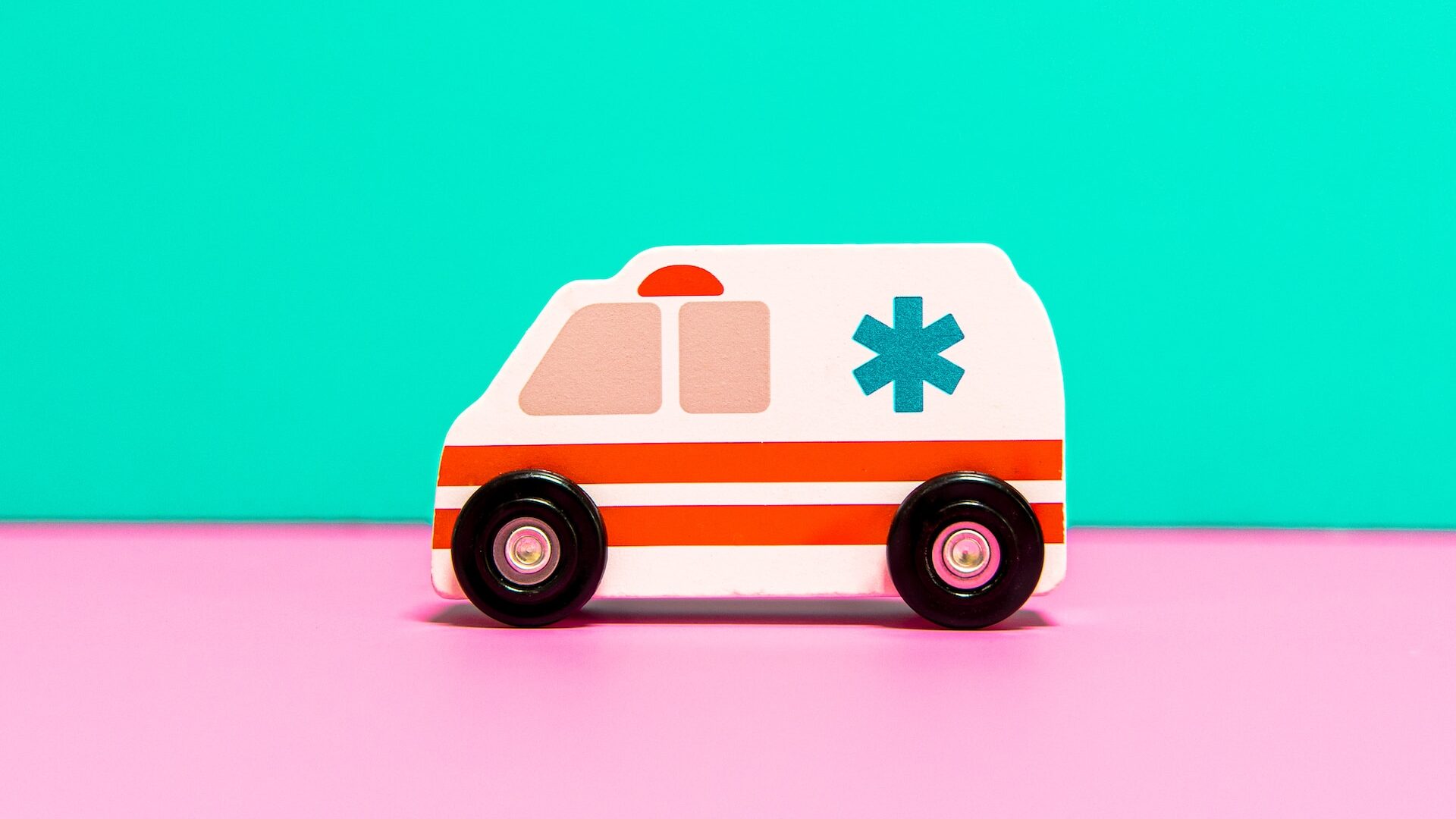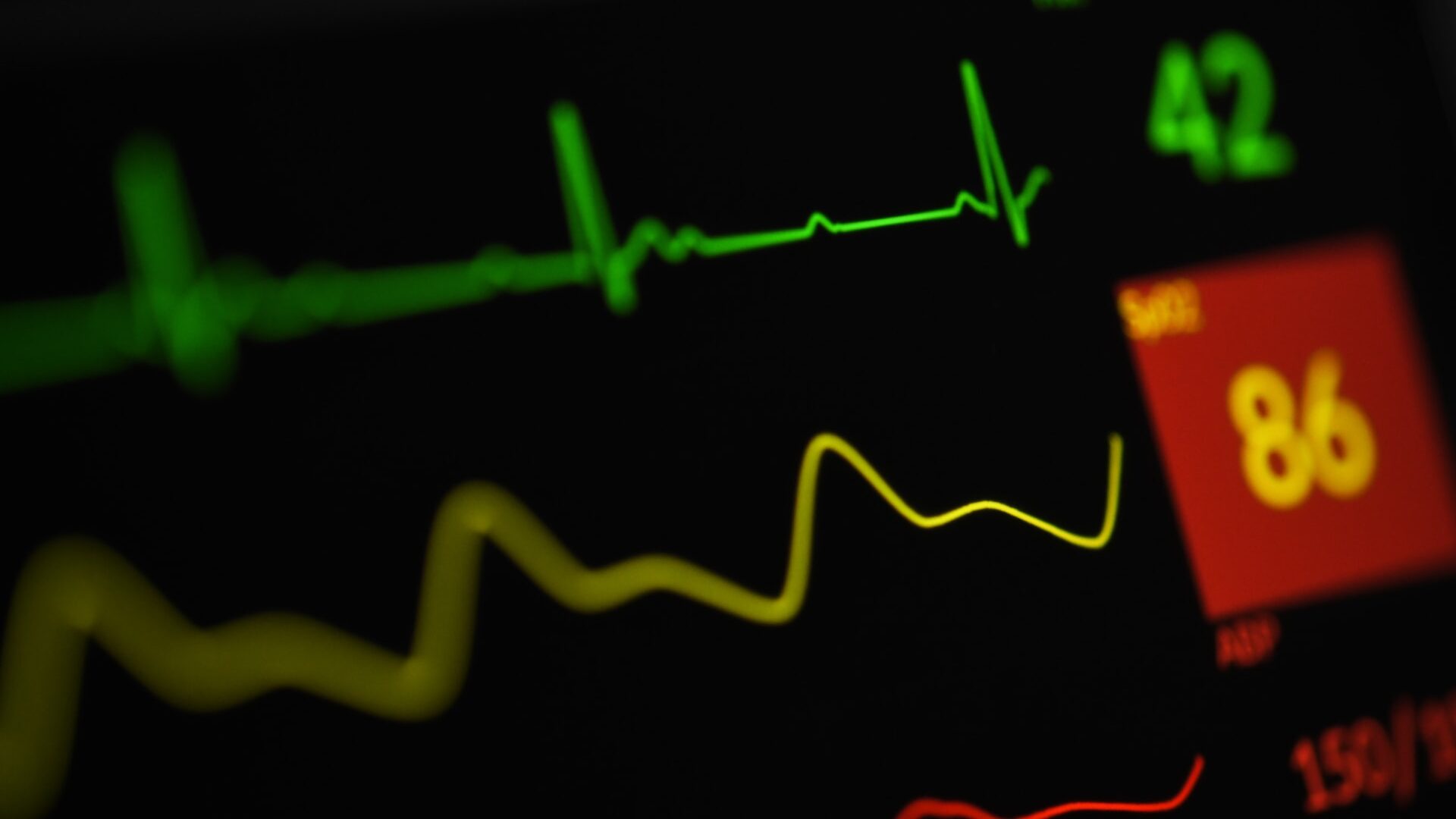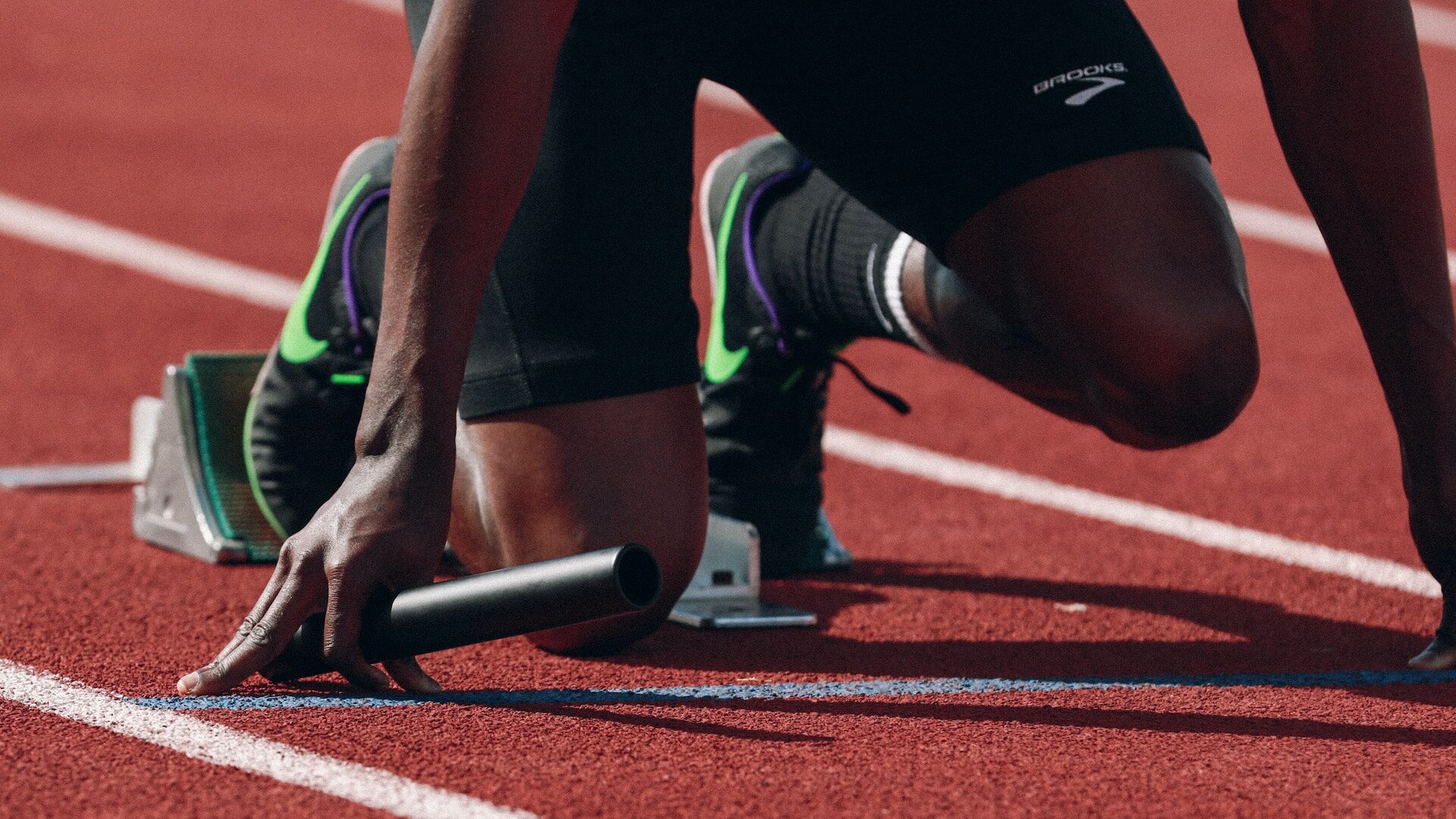Rhabdomyolysis is a disease in which skeletal muscle breakdown occurs, which is dangerous in its consequences. This complex process is caused by damage to the striated muscles and, as a result, the components of the muscle cells enter the bloodstream. As a result, several serious complications can occur.
The causes of muscle breakdown can be many. Rhabdomyolysis leads to the development of both mild symptoms and can be a life-threatening condition for the patient. The diagnosis of rhabdomyolysis is an indication for inpatient treatment.
Rhabdomyolysis is characterized by the damage and breakdown of skeletal muscle cells, known as myocytes. This process causes the release of their contents into the bloodstream, resulting in various disease symptoms.
Myocytes – Muscle fibers, or myocytes, are individual cells in both striated and smooth muscle. They can also be found in the walls of arteries. The structure of myocytes varies depending on their location. These cells play a crucial role in maintaining the proper shape of tissues and organs. Additionally, they enable muscle contractions and protect underlying systems.
Myocytes are capable of generating some heat and when muscle tissue breaks down, their components enter the bloodstream. The consequence is a significant increase in their concentration in the blood and high activity of intracellular enzymes. Muscle cell components![]() include:
include:

Myoglobin – Myoglobin, which has properties similar to hemoglobin, is crucial in rhabdomyolysis. Myoglobin, a protein responsible for oxygen storage, plays a crucial role in the muscles. It functions by accumulating oxygen in the red or striated muscles. Each myoglobin molecule carries one molecule of oxygen. When muscles are overtaxed and deprived of oxygen, myoglobin releases it to enable muscle activity. Myoglobin is filtered in the glomeruli and then passes into the renal tubules. In extreme circumstances, excessive constriction of renal blood vessels can lead to acute kidney failure.
Lactic acid – Lactic acid is crucial for the body's optimal function. It is primarily produced in muscle cells and red blood cells, forming when the body breaks down carbohydrates to generate energy in low oxygen conditions. In cases of rhabdomyolysis, the release of lactic acid contributes to metabolic acidosis, which can lead to impaired cardiovascular health, compromised blood supply, and reduced kidney function.
Potassium – Potassium is a crucial nutrient that helps regulate water balance and maintain cellular pH for proper acid-base balance in the body. It also plays a vital role in the functioning of the nervous and muscular systems. However, an imbalance of potassium can be dangerous. In cases of rhabdomyolysis, excessive release of potassium from muscle cells can lead to potentially life-threatening cardiac arrhythmias. Similarly, high potassium levels in the blood (hyperkalemia) can also cause arrhythmias and, in severe cases, even cardiac arrest.
Creatine – Creatine is a compound found mainly in human muscles that helps produce and store high-energy compounds. When there is an ample supply of creatine, it results in larger stores of the energy carrier, which leads to improved muscle performance during exercise. During rhabdomyolysis, creatine and myoglobin escape from inside the myocytes, a substantial factor in damage and further renal failure.
The process of rhabdomyolysis can develop for a great many reasons. The most common is external mechanical damage. Such a process can also start due to virus infections. Thus, among the causes of rhabdomyolysis are:

External mechanical damage – The most common causes of rhabdomyolysis are external mechanical damage to the muscles, often associated with car accidents. Severe muscle damage can lead to crush syndrome. Rhabdomyolysis can also occur as a result of extensive body burns or electrocution.
Muscle diseases – Certain diseases can cause rhabdomyolysis, a condition characterized by muscle breakdown. Acute myopathies are rare disorders that result in muscle weakness and atrophy, with the disease starting in skeletal muscle cells. Each case of myopathy can have unique causes, symptoms, and progression. While all myopathies have a genetic basis, their inheritance patterns can vary.
Extreme physical exertion – Post-exercise rhabdomyolysis, a condition characterized by extreme muscle damage, typically affects athletes and individuals engaging in intense training regimens, such as soldiers and bodybuilders. It can also occur in those resuming vigorous exercise after a break or engaging in intense workouts after recovering from viral infections.
Taking medications – Certain medications can increase the risk of developing rhabdomyolysis. This includes statins, which are medications used to lower cholesterol levels. Fibrates, which treat lipid disorders, can also be a factor. Additionally, non-steroidal anti-inflammatory drugs like salicylates, which have analgesic and anti-inflammatory properties, may contribute to the condition.
Ischemia of large muscle groups – One potential complication of extensive surgery is the development of ischemia in large muscle groups. This condition, if left untreated, can progress to rhabdomyolysis
Status epilepticus – Status Epilepticus refers to seizures that last for more than 30 minutes or occur continuously without regaining consciousness in between. Rhabdomyolysis, a condition where muscle breakdown occurs, can also be triggered by an epileptic seizure.
Viral and bacterial infections – Infectious agents can lead to rhabdomyolysis. Infection with Legionella bacteria, influenza virus, cytomegalovirus, and Epstein-Barr virus is among them. Bacterial and viral infections of rhabdomyolysis are prevalent in the course of sepsis.
Electrolyte disorders – Electrolyte disorders can lead to rhabdomyolysis, especially hypokalemia, potassium deficiency, hypophosphatemia, or phosphorus deficiency. Electrolyte deficiencies can result from an inadequate supply of these components from food in people with alcoholism or anorexia.
Metabolic disorders – The causes of muscle breakdown can also be metabolic and result from serotonin syndrome, hypothyroidism, or arise from electrolyte disorders. Disruption of fatty acid metabolism, glycogen breakdown, or malfunction of mitochondria, which are found in cells, can also lead to muscle breakdown. The common denominator of many diseases associated with rhabdomyolysis is so-called low endurance to exercise or rapid fatigue and weakness after exercise.
Alcohol poisoning – Alcohol poisoning is a dangerous condition that occurs when an excessive amount of ethanol is consumed or non-food alcohol is ingested. It occurs when the body is unable to effectively process or eliminate the excess alcohol, potentially resulting in a life-threatening situation. In severe cases, alcohol poisoning may even lead to rhabdomyolysis.
Carbon monoxide poisoning – Carbon monoxide poisoning occurs when individuals inhale this toxic gas. The poisoning typically happens as a result of malfunctioning stoves, inadequate ventilation from heating appliances, or exposure to engine exhaust. Carbon monoxide poisoning can have serious health consequences, including the potential development of rhabdomyolysis.
Venomous snake bites – The venom of some snakes can cause rhabdomyolysis. Travelers, residents of places where venomous snake species are abundant, and breeders of venomous snakes are at risk. One snake whose venom can cause rhabdomyolysis is the Malayan cobra.

Symptoms of rhabdomyolysis can vary, depending on how severely the muscles have been damaged. Rhabdomyolysis leads to the development of both mild symptoms and can be a life-threatening condition for the patient. If the patient develops dangerous symptoms, then severe complications of rhabdomyolysis can be suspected. These include acute kidney injury and disseminated intravascular coagulation syndrome. On the other hand, signs of the rhabdomyolysis process include:
Muscle pain – This is one of the main symptoms of rhabdomyolysis. Muscle pain also occurs at rest. It usually involves the lumbar region and the proximal parts of the extremities. The proximal direction of a limb is the anatomical position facing the attachment of a limb or other structure.
Weakness – Muscle weakness is a common symptom associated with rhabdomyolysis. It may present as muscle tremors and difficulties maintaining balance. General weakness can also be an indication of an underlying medical condition.
Dark-colored urine – One of the most distinct symptoms of rhabdomyolysis is dark-colored urine. The urine takes on a dark or reddish-brown color, resembling that of coffee or tea. The presence of myoglobin causes the red-brown coloration of urine. Another symptom will be a reduced volume of urine produced; there may even be a complete inhibition of urine production.
Muscle swelling – Rhabdomyolysis can cause various muscle symptoms, including muscle swelling. In addition, muscle stiffness is often present, as well as muscle contractures. Swelling, stiffness, and spasms affect the muscles affected by the process.
Fever – Additionally, individuals experiencing muscular symptoms may also experience fever or fever-like symptoms. These symptoms are most commonly observed in cases of post-exertional rhabdomyolysis.
Nausea – Nausea is another symptom that can occur during rhabdomyolysis. It may lead to vomiting and is often accompanied by fever and other flu-like symptoms.
Tachycardia – In addition to the more common symptoms, another sign of the illness is an increased heart rate, also known as tachycardia. This refers to a type of abnormal heart rhythm. In some cases, muscle breakdown can lead to more severe cardiac complications.
A conscious person can determine that something wrong is happening in their body, and a diagnostic history identifying symptoms is the basis for diagnosis. However, rhabdomyolysis can also develop in unconscious people, such as post-operative patients. Then, detecting rhabdomyolysis and noticing the signs is much more difficult. Disturbing symptoms include muscle stiffness, characteristic coloring of the extremities, and skin changes in the form of blisters. Laboratory tests also play a crucial role in diagnosing the disease in unconscious patients.

The first diagnostic method is usually a doctor's interview with the patient. If you notice symptoms such as muscle pain and dark urine, it could be a sign of rhabdomyolysis. However, diagnosing this condition can sometimes be challenging because the symptoms may not always be severe or typical. Doctors usually conduct detailed diagnostic tests once the initial acute symptoms have subsided. Then, the following diagnostic methods are used:
Exercise tests – Exercise tests, also known as stress tests, involve conducting an electrocardiogram (ECG)![]() while the patient engages in controlled physical exertion. These tests help assess how the body behaves under increased effort and specifically focus on monitoring heart function. In cases where rhabdomyolysis is a concern, a stress test may be employed.
while the patient engages in controlled physical exertion. These tests help assess how the body behaves under increased effort and specifically focus on monitoring heart function. In cases where rhabdomyolysis is a concern, a stress test may be employed.
Blood tests – They are essential in confirming rhabdomyolysis. The basis is the determination of creatine kinase activity, the concentration of which increases several hours after muscle damage. Also used in the diagnosis is the determination of myoglobin, which is particularly important at the beginning of treatment. In laboratory tests, it is common to observe an increase in potassium concentration, as well as levels of urea, lactate dehydrogenase, and phosphate. Conversely, calcium levels tend to decrease.
MRI – Imaging studies, specifically magnetic resonance imaging (MRI), can accurately identify the muscle groups affected by rhabdomyolysis. MRI provides detailed cross-sectional images of the body without using ionizing radiation, making it a non-invasive and safe diagnostic tool. This imaging study allows healthcare professionals to visualize changes in muscle areas, such as swelling or inflammation.
Muscle Biopsy – A muscle biopsy of the skeletal muscles can be done for diagnostic purposes in neuromuscular diseases. This procedure helps identify the specific type of disease and provides valuable information about the progression and severity of the condition. Sometimes, a skeletal muscle biopsy is ordered to confirm the patient's diagnosis, although it is not a necessary test.

Patients diagnosed with muscle rhabdomyolysis require appropriate treatment as soon as possible, which often means hospitalization. In the therapeutic process, the first step is to remove the factor that led to muscle cell damage. This may include, for example, discontinuing the medications taken. It is also essential to try to avoid the development of kidney damage in the patient. Thus, treatments for rhabdomyolysis include:
Fluid therapy – During rhabdomyolysis, fluid therapy should also be started as soon as possible to increase glomerular filtration and thus protect the kidneys from damage. This treatment method intravenously uses large amounts of fluids to ensure adequate renal perfusion. Sodium bicarbonate and m******l are often added to the juices to protect the kidneys further and reduce muscle edema.
Lowering the amount of potassium in the blood – Another element is reducing the amount of potassium in the blood due to the possible development of dangerous cardiac arrhythmias. Discontinuing medications that cause excess potassium or using potassium-reducing agents may help.
Controlling uric acid levels – Monitoring uric acid levels is an integral part of treatment to protect against the development of metabolic acidosis. Intravenous administration of sodium bicarbonate is used to achieve proper blood and urine pH.
Hemodialysis – When patients reach the stage of kidney failure, they may undergo hemodialysis![]() , hemofiltration, or a combination of both. Hemodialysis involves a process where blood is taken out of the body through disposable tubes and passed through a special filter called a dialyzer. This dialyzer removes waste products and excess water from the blood. After this purification process, the clean blood is returned to the body.
, hemofiltration, or a combination of both. Hemodialysis involves a process where blood is taken out of the body through disposable tubes and passed through a special filter called a dialyzer. This dialyzer removes waste products and excess water from the blood. After this purification process, the clean blood is returned to the body.
Pain therapy – Treatment for rhabdomyolysis focuses on managing the severe pain experienced by patients. Painkillers are commonly prescribed to provide relief. In addition, ensuring proper nutrition and implementing effective pain control strategies are crucial aspects of treatment for this condition.

Diagnosing rhabdomyolysis relies on recognizing the typical symptoms and observing biochemical markers that indicate muscle cell death. However, only about half of patients diagnosed with rhabdomyolysis experience symptoms like swelling and muscle weakness.
The outcome of rhabdomyolysis can vary depending on each individual case, but overall, the prognosis is relatively positive when appropriate treatment is administered promptly.
The mortality rate associated with this condition is not high, and complete recovery is achievable in most cases. Permanent muscle damage is rarely observed. Patients with extensive muscle damage can regain full mobility with rehabilitation.
It is worth familiarizing yourself with rhabdomyolysis, as early diagnosis and treatment make it reversible. This is especially important for people at risk of muscle breakdown. Those at risk of developing rhabdomyolysis include the following groups:
Patients after surgery – Invasive surgeries can lead to ischemia of muscle groups. This is especially true for bariatric, orthopedic, and vascular surgeries. This poses a risk of rhabdomyolysis. In addition, prolonged immobilization can also lead to this condition.
Athletes – Athletes, specifically those who participate in high-intensity physical activities, are at a heightened risk of developing rhabdomyolysis. This condition can occur when individuals push themselves beyond their physical capabilities and fitness level.
Patients with infections – Rhabdomyolysis can occur in individuals with various systemic and local conditions, particularly those with severe infections caused by specific viruses. Sepsis is a particular concern for patients with systemic diseases.
Patients after severe trauma – After experiencing severe physical trauma, such as extensive burns or electrocution, patients may develop hypoxia due to the ischemia of large muscle groups. These conditions are known to be common causes of muscle breakdown.
Drug addicts – Drug addiction can be life-threatening, increasing the risk of conditions like rhabdomyolysis. Substances such as heroin, cocaine, LSD, and amphetamines can lead to muscle breakdown.
Alcohol addicts – Alcohol poisoning can also lead to rhabdomyolysis. Excessive alcohol consumption also leads to the development of acute muscle damage and subsequent kidney damage. as well as alcoholic myopathy.

The breakdown of muscle cells causes the release of potentially toxic substances into the bloodstream. As a result, dangerous complications can occur. The consequences of muscle breakdown result in both muscle damage and the release of the contents of the disintegrating muscle cells into the bloodstream. The most severe complications are kidney problems, which may result in failure of these organs. Complications caused by the condition of rhabdomyolysis include:
Hyperkalemia![]() refers to an excessive amount of potassium in the blood, which can disrupt the body's balance. It can range from mild to severe, with mild cases often showing no symptoms. Symptoms become more apparent when potassium levels rise rapidly.
refers to an excessive amount of potassium in the blood, which can disrupt the body's balance. It can range from mild to severe, with mild cases often showing no symptoms. Symptoms become more apparent when potassium levels rise rapidly.
Early signs commonly include muscle weakness, shortness of breath, and a slow heart rate. In severe cases where potassium levels increase quickly, hyperkalemia can lead to cardiac arrest and sudden death. Treatment for hyperkalemia involves addressing the underlying cause and removing excess potassium from the body if it poses a threat to the patient's health or life.
Cardiac arrhythmia![]() is an ailment characterized by acceleration, deceleration, and irregularity in its functioning. The disorder is utterly asymptomatic in some patients, while it is sometimes life-threatening in others. Symptoms vary in nature depending on the type of disorder, but the most common sensation is that of a rapid, uneven heartbeat.
is an ailment characterized by acceleration, deceleration, and irregularity in its functioning. The disorder is utterly asymptomatic in some patients, while it is sometimes life-threatening in others. Symptoms vary in nature depending on the type of disorder, but the most common sensation is that of a rapid, uneven heartbeat.
Sometimes, patients feel a sudden urge to cough and choke. A slowed and hard heartbeat also appears. In addition, arrhythmia is adversely affected by smoking. Treatment of cardiac arrhythmias depends on the type of arrhythmia, its severity, and the symptoms present.
Disseminated Intravascular Coagulation (DIC)![]() is a syndrome that can occur due to certain diseases. When someone has DIC, their coagulation system becomes overactive, causing blood clots to form and block small and medium-sized blood vessels. These clots can lead to severe complications, including damage and death of vital organs.
is a syndrome that can occur due to certain diseases. When someone has DIC, their coagulation system becomes overactive, causing blood clots to form and block small and medium-sized blood vessels. These clots can lead to severe complications, including damage and death of vital organs.
The main symptom of DIC is the presence of widespread clotting in the body's microcirculation. Other specific symptoms are bleeding from surgical and traumatic wounds, intravenous injection sites, and lined arterial vessels. Some patients have extensive subcutaneous hemorrhages and deep tissue hemorrhages.
The primary management method is to control the underlying disease during which the DIC syndrome developed. In addition, replacement therapy is used, which includes the administration of red blood cell concentrate.
Renal failure![]() is defined as a state of impairment of normal renal function that the body's compensatory mechanisms cannot compensate. The condition is characterized by a gradual deterioration of renal function with a slow decline in glomerular filtration rate observed over months or years, an increase in blood creatinine levels, and a series of clinical symptoms.
is defined as a state of impairment of normal renal function that the body's compensatory mechanisms cannot compensate. The condition is characterized by a gradual deterioration of renal function with a slow decline in glomerular filtration rate observed over months or years, an increase in blood creatinine levels, and a series of clinical symptoms.
Symptoms indicative of kidney failure include anemia, excessive fatigue, hypertension, neurological disorders, calcium-phosphate disorders, and reduced immunity. The goal of treatment is to eliminate or slow the process of kidney damage and improve the quality of life with the disease. Treatment depends on the condition causing the failure. Treatment is also introduced to abolish the nagging symptoms of the disease and its complications.
Rhabdomyolysis is a complex condition that occurs when muscles are damaged, leading to the breakdown of muscle tissue. This process releases substances, including myoglobin, into the bloodstream that can be toxic to various organs. One of the most severe complications of rhabdomyolysis is kidney damage. Several factors can contribute to muscle breakdown, such as certain medications used to treat chronic diseases or injuries from accidents or intense workouts.
The main symptoms of rhabdomyolysis include pain, swelling, and weakness in the affected muscles. Other signs may include muscle tremors, balance issues, or muscle pain. Dark brown urine, known as myoglobinuria, can also indicate muscle breakdown. Medical professionals perform detailed diagnostic tests to determine the underlying cause of rhabdomyolysis.
These tests may involve stress tests, magnetic resonance imaging (MRI) scans, or muscle biopsies. The specific additional tests depend on the accompanying symptoms and potential causes being considered. Treatment for rhabdomyolysis depends on its underlying cause. For instance, if certain medications are responsible for muscle breakdown, they should be discontinued.
Additionally, intravenous fluids and m******l may be administered to improve renal blood flow and reduce interstitial edema in damaged tissues. In severe cases where kidney function is severely compromised due to rhabdomyolysis, dialysis or renal replacement therapy might be necessary.